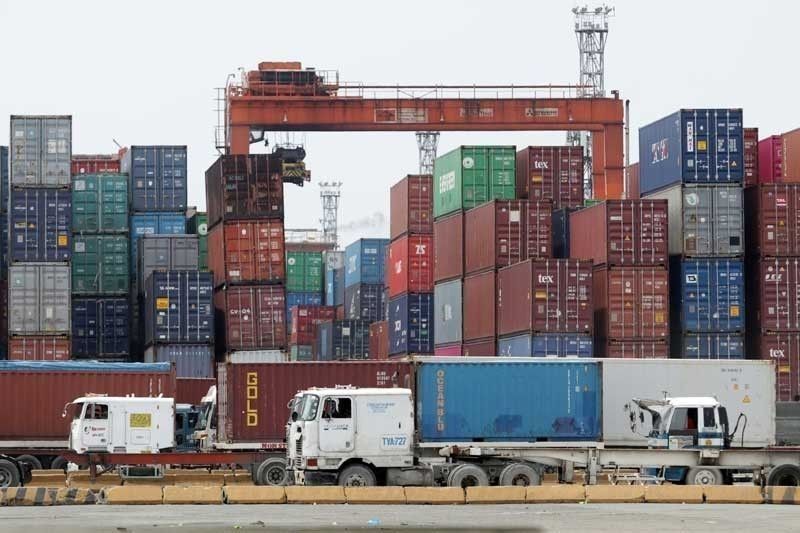Trade deficit widens to near 3-year high

MANILA, Philippines — The country’s trade deficit has ballooned to its highest level in almost three years, with imports outpacing exports as the economy regains momentum to recover from the pandemic, according to the Philippine Statistics Authority (PSA).
Latest data from the PSA showed that the trade shortfall reached $4.016 billion in October, almost doubling from the $2.05 billion deficit in the same period last year, and higher than the $3.99 billion gap recorded a month before.
This is the highest deficit in 33 months or since the $4.27 billion recorded in January 2019 even before the pandemic began.
Rizal Commercial Banking Corp. chief economist Michael Ricafort said the latest trade deficit was due to measures that allowed the reopening of the economy from the lockdown months ago toward greater normalcy.
The wider trade shortfall was mainly due to the quicker growth in imports of 25.1 percent to $10.43 billion in October from $8.34 billion a year ago.
This is also faster than the 24.9 percent hike recorded in September.
In contrast, the country’s exports grew by a minimal two percent to $6.41 billion from a year ago. On a monthly basis, exports actually slowed from the 6.4 percent expansion in September.
Overall external trade in goods in October went up by 15.2 percent to $18.84 billion from $14.62 billion year-on-year.
For the 10-month period, the country’s trade shortfall expanded by 66 percent to $33.21 billion from $20 billion in the same period last year as imports continued to outpace exports.
ING Bank senior economist Nicholas Mapa said the over $4 billion in deficit may not really be a trend going into 2022 provided global crude oil prices normalize.
“Despite the supersized trade deficit, the Philippine peso has managed to steady and will likely take its cues more so from the financial market flows set to be dedicated by the pace of the US Fed taper and rate hikes,” Mapa said.
“Concerns that the peso would rise rapidly to 53 to $1 are likely to fade now,” he said.
Further, imports have been outstripping the country’s exports as the economy continues to recover. Imports for the 10-month period rose by 29.7 percent to $95.31 billion.
For October alone, imports rose by 25 percent with all major sectors posting gains, bloated by pricier crude oil as fuel imports soared 164 percent amid disruptions in the global supply chain.
Fuel imports during the month reached $1.65 billion from just $627 million a year ago.
Ricafort said oil prices have started to ease due to concerns over the Omicron variant that could slow global economic recovery which could temper and further increase in imports.
“Recent disruptions in the global supply chains would present some opportunities for Philippine exporters to step up production to fill up increased demand in the global markets,” he said.
Apart from fuel, other inbound shipment of goods and services also expanded with the sub-sectors of medicinal and pharmaceutical products, industrial machinery and equipment, and cereals and cereal preparation leading the growth.
China is still the country’s biggest supplier of imported goods at $2.08 billion, almost 20 percent of the total.
Meanwhile, exports in October only inched up two percent to $6.41 billion. Year-to date, exports increased 16 percent to reach $62.1 billion.
Mapa said exports managed to grow but were weighed down by the mainstay electronics component which only expanded marginally.
For October, dollar earnings from electronic products, the country’s top export, just inched up 1.7 percent to $3.65 billion.
Other exports that showed strength during the month include coconut oil, cathodes, and chemicals. Exports of metal components, other manufactured goods, and ignition wiring sets were down during the month.
The country’s top 10 exports, which cornered 84 percent of the total, went up three percent to $5.39 billion during the month.
However, the top 10 export destinations of the Philippines decreased by 1.2 percent to $5.21 billion. Declines were recorded in Korea, Japan, Thailand, the US, Germany, and Singapore. China was the top destination with $1 billion or 15.8 percent of the total exports.
- Latest
- Trending



























